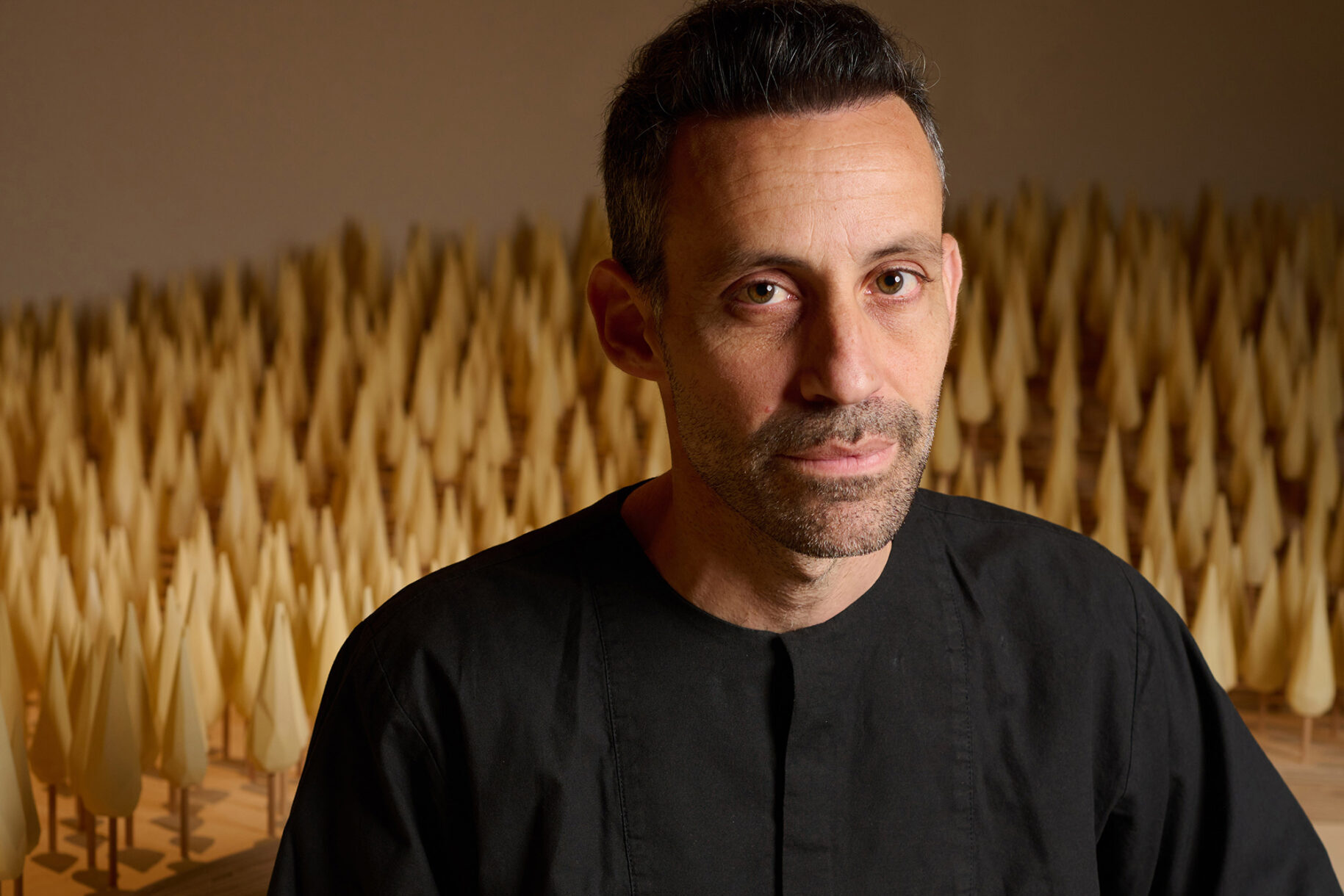
May 16, 2018
Chain Letters: Andrew Blauvelt

This interview is part of an ongoing Design Observer series, Chain Letters, in which we ask leading design minds a few burning questions—and so do their peers, for a year-long conversation about the state of the industry.
In May, we examine the state of design criticism in a world where everyone’s a critic.
Andrew Blauvelt is Director of the Cranbrook Art Museum, which organizes and hosts exhibitions, presents public programs, and collects objects in the areas of modern and contemporary art, architecture, craft, and design. The Art Museum is part of Cranbrook Academy of Art, a top-ranked graduate school for art, architecture, and design. Prior to Cranbrook, Blauvelt served in a variety of curatorial and administrative roles at the Walker Art Center in Minneapolis for nearly 18 years, including as Design Director, Chief of Communications and Audience Engagement, and Senior Curator of Architecture and Design. His latest curatorial project is Too Fast to Live, Too Young to Die: Punk Graphics, 1975-1985 (2018).
Before entering the museum world, Blauvelt was a tenured professor at NC State University’s College of Design where he served as Head of the Graphic Design Department and Director of Graduate Studies. He has also taught graphic design at Cranbrook Academy of Art; the Jan van Eyck Academy in the Netherlands; the Herron School of Art of Indiana University; among others, and is a frequent lecturer at design conferences and schools around the world.
With the proliferation of independent mags and personal blogs, it seems everyone’s a critic. Is design criticism as we’ve known it still relevant? If not, how can the field regain relevancy?
Design criticism is definitely valid. We need to remember that not all forms and forums for criticism are the same. I have made an argument for a public form of criticism, which goes back to the Enlightenment period in which the idea of the public meant a space for open dialogue and civic discourse. Criticism allows for self-reflection, and that is necessary when we use words like discipline and field to talk about design.
Criticism allows for self-reflection, and that is necessary when we use words like discipline and field to talk about design.
What are three rules that make for a productive discourse about design?
Everyone should come to the conversation with a clear understanding of their perspective and personal bias. Point of view is a good thing. Critics have bias and perspective. The difference is whether it is disclosed or unspoken.
Design criticism should seek to advance the field of design: Its understanding and its practice. So, criticism should be constructive and helpful to someone or something, even if it’s hard on the designer or the client or society.
Designers should hold sufficient curiosity about their own work and the work of others. Design criticism needs an audience beyond the designer too, so contextualizing design in ever larger spheres of understanding is important.
How do you approach trends like “anti-design,” which throw aesthetics traditionally associated with “good” design out the window?
Oh, this has been happening in art and design for decades. So, it doesn’t seem to be a trend but a cyclical phenomenon in design. But it should be more than just chucking out aesthetics, it should also explore chucking out all sorts of received wisdom about design (ergonomics, function, process, etc.).
Point of view is a good thing. The difference is whether it is disclosed or unspoken.
What is the best design criticism you’ve read recently?
It’s not fully formed at all, but I enjoyed the debate surrounding the nomination of Forensic Architecture for the Turner Prize. The group investigates crimes, incidents, and the like using the lens and tools of architecture (and beyond). How does this fit with being named among a group of contemporary artists? Does it weaken their position in the search for social justice? Is this the latest annexation of architecture and design into the arts? It raises questions.
Bearing in mind our first question, can anyone be a critic?
Yes. However, just because you can write doesn’t mean that you are an author. I think it takes practice to make it a practice. The same thing for everyone being a designer.
Just because you can write doesn’t mean you’re an author. It takes practice to make it a practice.
From Alice Twemlow: In your many roles—as educator, curator, design director, chief of communications writer, and now museum director—to what extent (and in what ways) do you still identify as a graphic designer?
I still very much identify and practice as a designer (of both communications and spaces). I blend different roles together on a project. For instance, I just finished writing, editing, and designing a publication for a new exhibition I curated, which I also designed. Not by myself of course, but with different teams of people. I also use the process I learned as a designer to tackle almost every kind of substantive problem: identifying issues, gathering and analyzing information, formulating creative solutions, guiding implementation, and evaluating feedback.
Next week: Andrew asks Molly Heintz, Program Chair of the SVA MA Design Research program: It’s interesting that Superscript was formed out of alumni from a design criticism program. How do you think about content differently than other editorial consultants that arrive to content and strategy from marketing or press relations backgrounds?
Observed
View all
Observed
By Lilly Smith
Related Posts

Design Juice
Rachel Paese|Interviews
A quieter place: Sound designer Eddie Gandelman on composing a future that allows us to hear ourselves think

Design of Business | Business of Design
Ellen McGirt|Audio
Making Space: Jon M. Chu on Designing Your Own Path

Design Juice
Delaney Rebernik|Interviews
Runway modeler: Airport architect Sameedha Mahajan on sending ever-more people skyward

Sustainability
Delaney Rebernik|Books
Head in the boughs: ‘Designed Forests’ author Dan Handel on the interspecies influences that shape our thickety relationship with nature
Recent Posts
“Dear mother, I made us a seat”: a Mother’s Day tribute to the women of Iran A quieter place: Sound designer Eddie Gandelman on composing a future that allows us to hear ourselves think It’s Not Easy Bein’ Green: ‘Wicked’ spells for struggle and solidarity Making Space: Jon M. Chu on Designing Your Own PathRelated Posts

Design Juice
Rachel Paese|Interviews
A quieter place: Sound designer Eddie Gandelman on composing a future that allows us to hear ourselves think

Design of Business | Business of Design
Ellen McGirt|Audio
Making Space: Jon M. Chu on Designing Your Own Path

Design Juice
Delaney Rebernik|Interviews
Runway modeler: Airport architect Sameedha Mahajan on sending ever-more people skyward

Sustainability
Delaney Rebernik|Books
